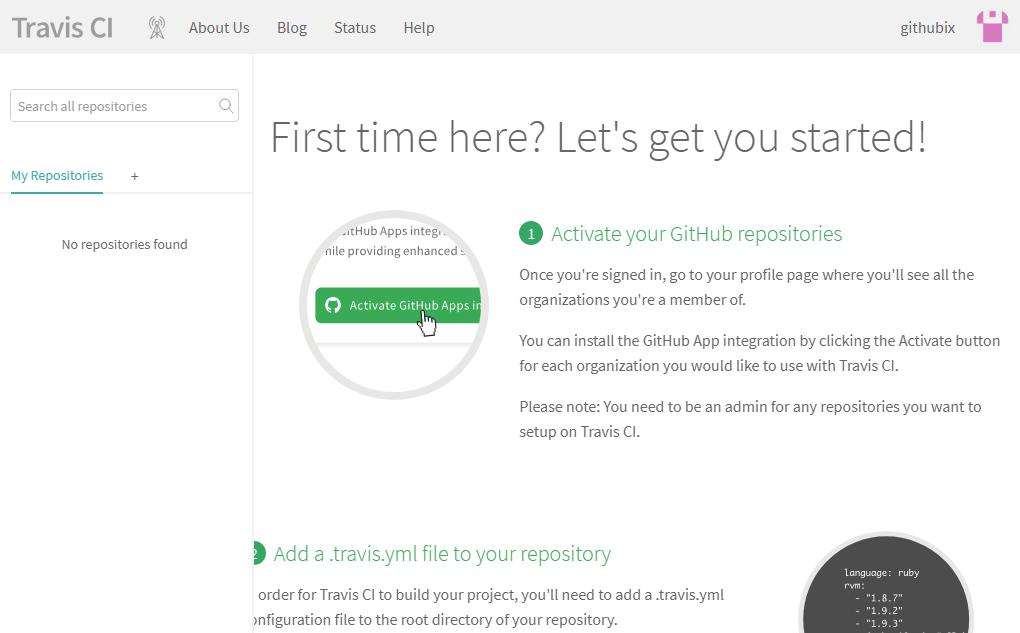前回の続き
1. AWSマネジメントコンソールにログイン
2. S3を選択
3. 「バケットを作成する」押下
バケット名は何にしましょう。とりあえず「travisci-s3」としておきます。
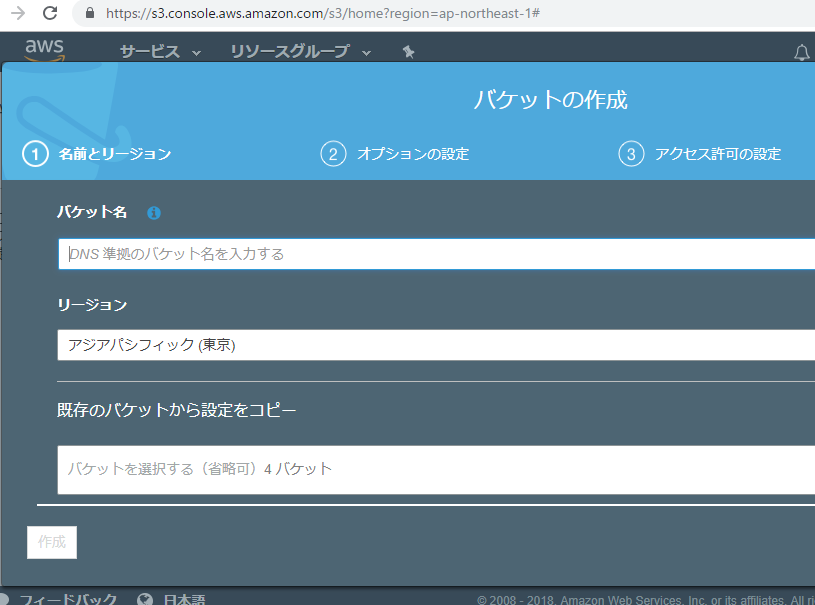
4. デプロイ用のIAMポリシーを作成
ん? IAM? IAMは確かユーザとロールだった筈。json形式で記載する。
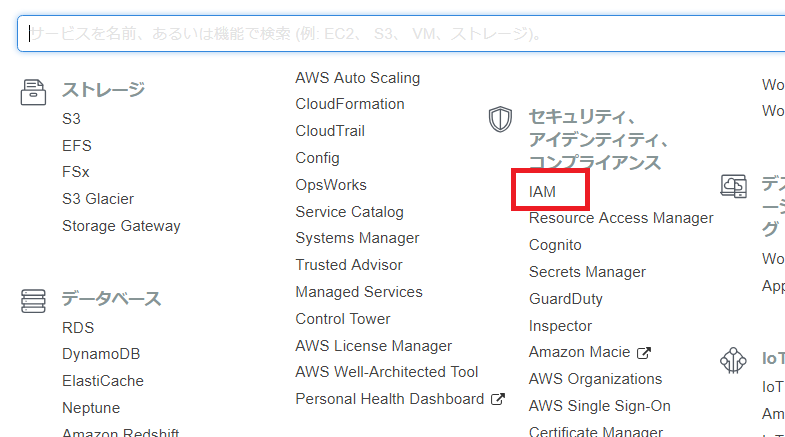
IAM Management Consoleを開きます
あああああああああああああああ、S3のIAMポリシーの作成方法がわからんーーーー
ソフトウェアエンジニアの技術ブログ:Software engineer tech blog
随机应变 ABCD: Always Be Coding and … : хороший
前回の続き
1. AWSマネジメントコンソールにログイン
2. S3を選択
3. 「バケットを作成する」押下
バケット名は何にしましょう。とりあえず「travisci-s3」としておきます。

4. デプロイ用のIAMポリシーを作成
ん? IAM? IAMは確かユーザとロールだった筈。json形式で記載する。

IAM Management Consoleを開きます
あああああああああああああああ、S3のIAMポリシーの作成方法がわからんーーーー
まず、githubでリポジトリをつくります。
適当に「travis-s3」としておきましょう。
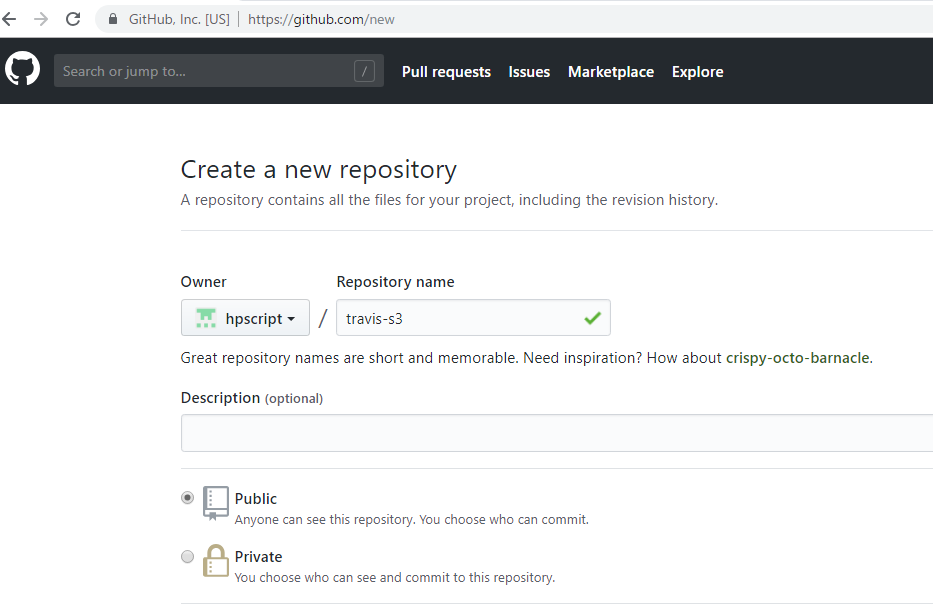
リポジトリにファイルを作成
<!DOCTYPE html> <html lang="ja"> <head> <meta charset="UTF-8"> <title>エンジニアの名言</title> <meta name="viewport" content="initial-scale=1.0,width=device-width"> </head> <body> <p>おしゃべりはいいから、お前のコードを見せろ</p> </body> </html>

vagrantに入ります
deployというディレクトリにいます。ここで作業すると仮定しましょう。
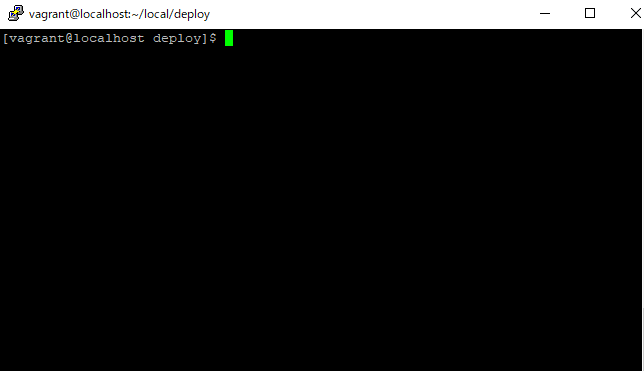
前準備ができました。それでは、いよいよTravisに触っていきましょう^^
Github Marketplaceを押下します。
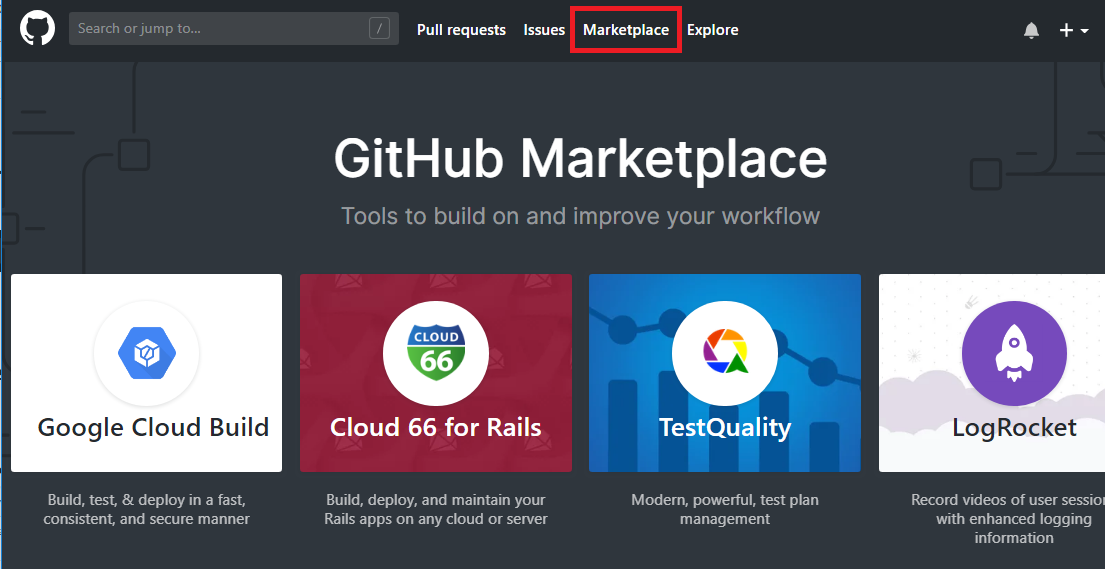
ページ中段のApps with free trialsでTravis CIをクリックします。
続いて、ページ中断のpricing and setupで、デフォルトで$69となっているので、Open sourceをselectし、install it for freeを選択します。
こんな感じの画面。見やすいですね。

リポジトリの選択画面になるので、先ほど作った「travis-s3」を選択します。
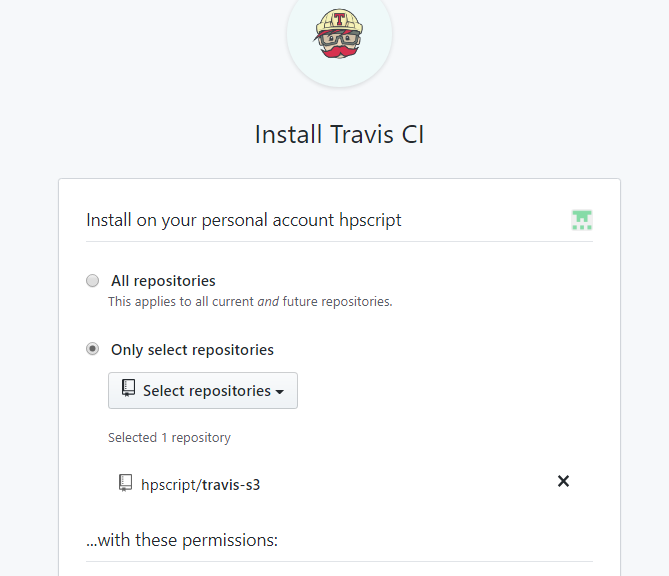
インストールすると、Travis CIのページにリダイレクトされます。
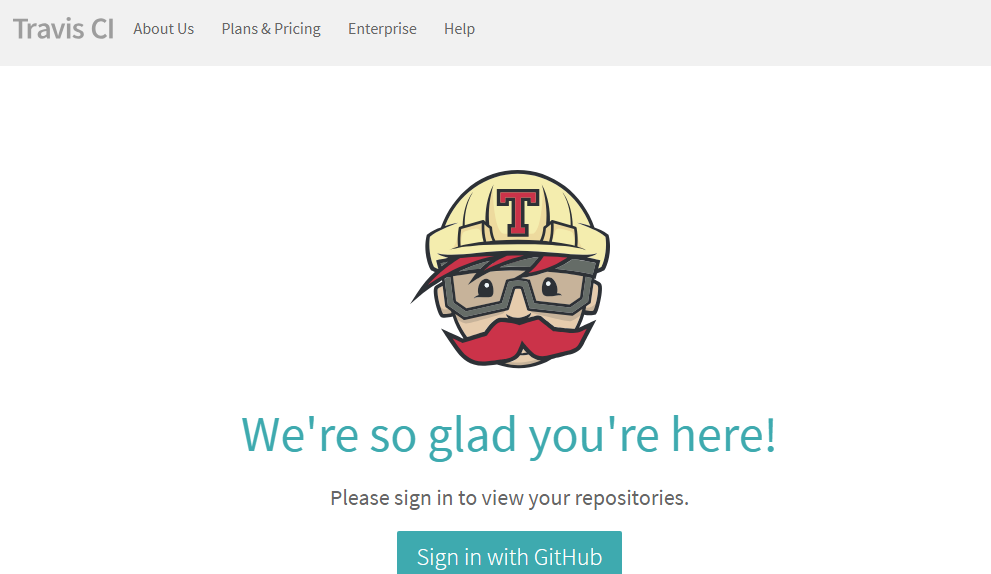
認証画面が出てくるので、「Authorize travis-pro」を押下します。
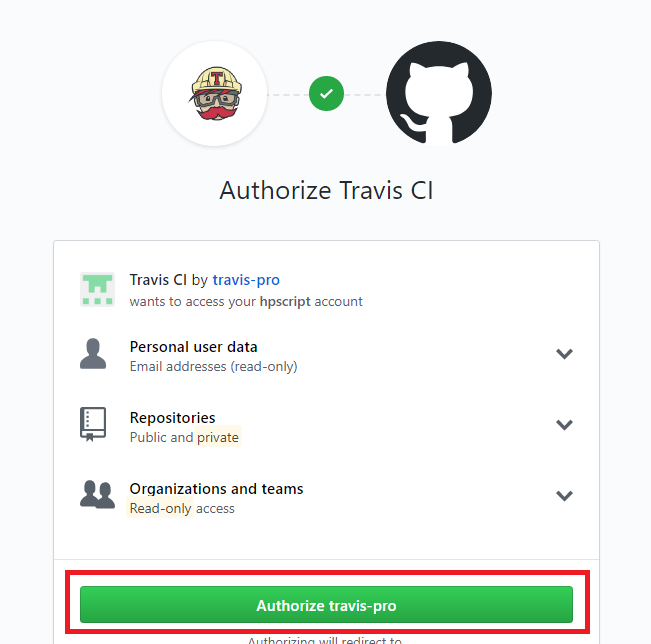
Git hubのレポジトリと連携したTravis CIのページが表示されます
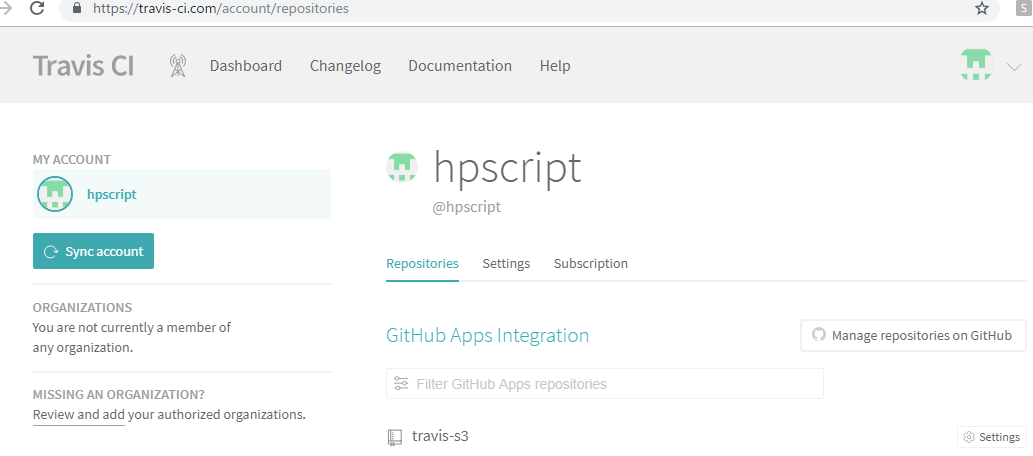
ちょっと長くなったので、続きは次回。
まず、Travisの公式サイトを見てみましょう。
https://travis-ci.com/
Features to help you get the job done
– quick setup
– live build views
– pull request support ☆
– pre-installed database services
– auto deployments on passing builds ☆
– clean VMs for every build
– Mac, Linux, and iOS support
やりたいのに星(☆)をつけました。ずばりauto deployments
フローが書いてありますね。

イメージとしてはBranch build flowがイメージしやすいか。
Branch build flow
-push code to Github
-github trigger
-build passes
-Travis CI deploys to server
-Travis CI tells team all is well
pushしてテストにパスすると自動でデプロイされる。
なるほど、なかなか良い。
概要は大体イメージできたので、早速やってみましょう。
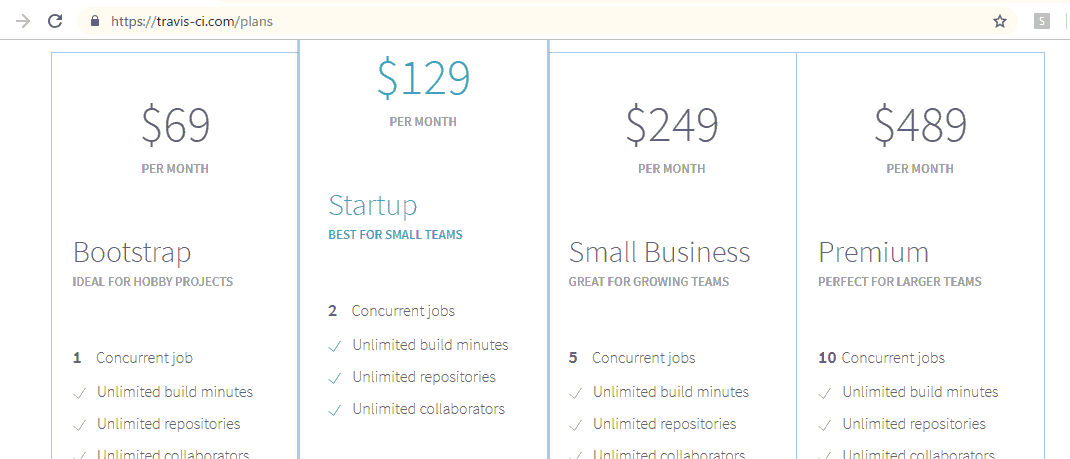
Bootstrap $69 1jobのみ ビルド制限、リポジトリ制限なし
Startup $129 2並列job
SmallBusiness $249 5並列ジョブ
Premium $489 10並列ジョブ
んか高いなー ossならフリー
Travis CI Enterpriseもありますねー
どうやら失敗したようです。
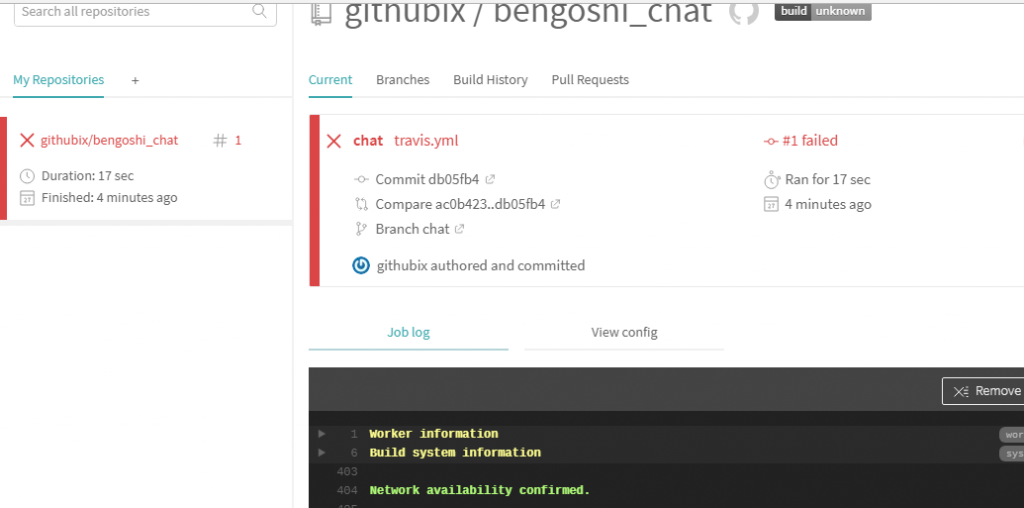
0.55s$ git clone --depth=50 --branch=chat https://github.com/githubix/bengoshi_chat.git githubix/bengoshi_chat Cloning into 'githubix/bengoshi_chat'... remote: Counting objects: 50, done. remote: Compressing objects: 100% (2/2), done. remote: Total 50 (delta 0), reused 2 (delta 0), pack-reused 47 Unpacking objects: 100% (50/50), done. $ cd githubix/bengoshi_chat $ git checkout -qf db05fb4b37219f42856c6148d96e13a6fbde87a5 Disabling Gradle daemon $ mkdir -p ~/.gradle && echo "org.gradle.daemon=false" >> ~/.gradle/gradle.properties rvm 4.10s$ rvm use default Using /home/travis/.rvm/gems/ruby-2.4.1 ** Updating RubyGems to the latest version for security reasons. ** ** If you need an older version, you can downgrade with 'gem update --system OLD_VERSION'. ** ruby.versions $ ruby --version ruby 2.4.1p111 (2017-03-22 revision 58053) [x86_64-linux] $ rvm --version rvm 1.29.3 (latest) by Michal Papis, Piotr Kuczynski, Wayne E. Seguin [https://rvm.io] $ bundle --version Bundler version 1.16.2 $ gem --version 2.7.7 No Gemfile found, skipping bundle install 0.15s$ rake rake aborted! No Rakefile found (looking for: rakefile, Rakefile, rakefile.rb, Rakefile.rb) /home/travis/.rvm/gems/ruby-2.4.1@global/gems/rake-12.3.0/exe/rake:27:in `' (See full trace by running task with --trace) The command "rake" exited with 1. Done. Your build exited with 1.
.travis.ymlがnullだったからでしょうか。
yamlを書きます。
language: php
php:
- 5.6
- 5.7
- hhvm
before_script:
- curl -s http://getcomposer.org/installer | php
- php composer.phar install --dev --prefer-source
script:
- mkdir -p build/logs
- phpunit --coverage-clover build/logs/clover.xml --configuration tests/phpunit.xml tests
after_script:
- php vendor/bin/coveralls -v
notifications:
slack:
rooms:
secure: your_token_key
TravisCI 画面
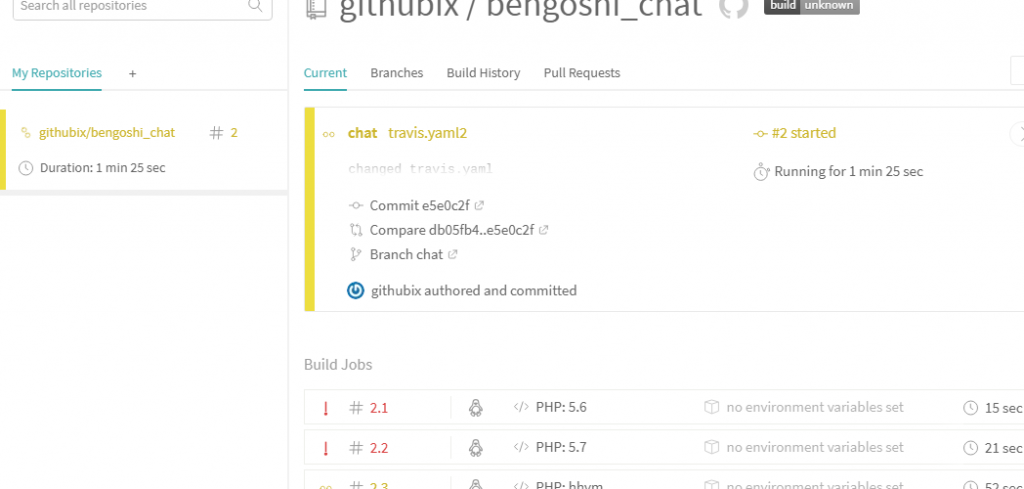
なるほど、こういうことか。テスト内容をyamlに書いて、rubyが実行するのね。それをslackなどに送付することも可能。
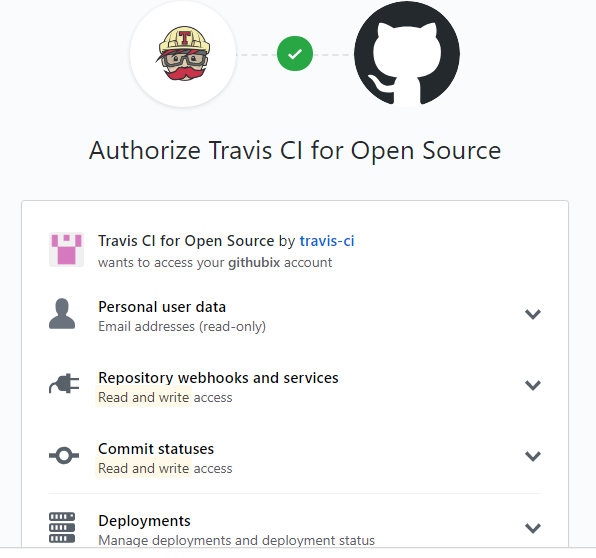
OAuthでログインします。
